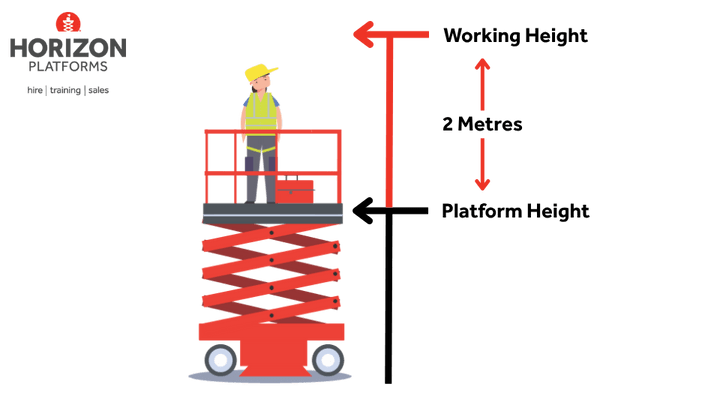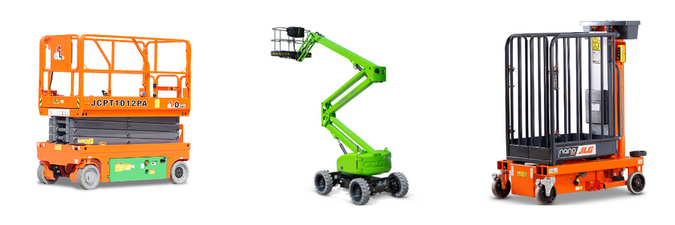When hiring access platforms, one of the first questions you’ll need to answer is: What working height do I need? It might sound simple, but getting it wrong can lead to safety issues, delays or even extra costs.
In this guide, we’ll explain how to calculate working height, why platform height and working height are different, and how to avoid common issues.
What Is Working Height?
Working height is the height at which a person can safely and effectively carry out a task from an elevated platform.
This assumes an average worker can safely reach about 2 metres above where they’re standing on the platform.
For example: If you hire a scissor lift with a platform height of 8 metres, the working height is considered to be 10 metres. But of course, there can be exceptions to this rule of thumb, so consider the following for every time you choose a MEWP for hire.
Platform Height vs Working Height
It’s been known for some people to confuse these two terms, but they’re not interchangeable:
- Platform Height: The maximum height the floor of the MEWP can be raised to.
- Working Height: The assumed maximum height a person can reach while standing on the platform.
Always check whether the quote from your MEWP supplier or the spec sheet you’re reading is referring to platform height or working height. If you misread it, you might end up with a MEWP that doesn’t reach where you need.
How to Calculate the Working Height You Need
Measure the height of the task, not just the structure
For example, if you’re installing lighting in a ceiling void above ductwork, start from where the MEWP will sit, which is mostly likely to be at ground level rather than on a mezzanine floor.
Factor in obstructions and positioning
In addition to working out the working height, this section will determine which machine you will need. For example, will the MEWP need to go on a slope or ramp? Will you need outreach to get over an obstacle? Our guide comparing boom lifts and scissors lifts will help you further.
It may be there are too many dangerous obstacles. In this scenario, you would have to determine if working at height with any access equipment is safe full stop. Horizon would be able to help here.
Add a safety margin
While the 2-metre reach rule is a good guide, it assumes average conditions. If the job involves overhead obstacles or working at awkward angles, you may need extra height or outreach for comfort and safety. We always suggest you seek advice from one of our MEWP experts in this scenario. Also, a site survey may be helpful.
Don’t rely on guesswork
Use a laser measure or plans, if possible. Even being 1 metre short of the desired working height can make a big difference and could lead to someone being tempted to work unsafely. If you’re not confident or need a second opinion for peace of mind, do contact our experts for help calculating the working height and choosing an appropriate MEWP. Better to be safe than sorry!
Mistakes to Avoid When Calculating Working Height
On the whole most people using MEWPs will have had certified access platform training, but we have seen issues in the past that have caused project delays and increased safety risks. Be mindful.
- Hiring based on platform height and not considering working height.
- Assuming all MEWPs have the same reach and outreach. Our machines range from a working height of 3.5 metres to well over 24 metres. And, scissor lifts don’t offer outreach, and some boom lifts offer greater outreach than others.
- Not accounting for surface level changes or changing weather conditions. For example, external ground slopes that could get wet and muddy or raised internal floors with fragile floors or different surfaces.
When planning a work-at-height project with a MEWP, ask your supplier for help if you are unsure. A good hire company will help with selecting the best machine for your site and task.
Try Get It Right First Time
At Horizon Platforms, we have help customers choose the right MEWP on thousands of projects, from electrical contractors and industrial fit-out teams to facilities managers and shopfitters.
If you need assistance, we’ll help you:
- Calculate the right working height
- Select the correct machine for your site and access conditions
- Get reliable delivery and support
Need advice or a quick quote? Our team is ready to help, even for last-minute or out-of-hours jobs.


